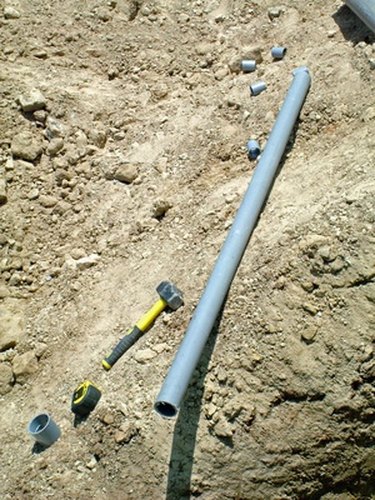
PVC pipe is both durable and flexible and generally does not form cracks under normal service operation. However, with improper use or installation, or in extreme environments, PVC can crack. Most causes of PVC cracking can be avoided through the proper design of fluid circuits and by keeping operation within the material's performance specifications.
Overpressurization
Video of the Day
One of the most common causes of cracking and splitting in PVC pipes is over-pressurization. Each size and grade (or schedule) of PVC pipe is rated to a maximum fluid pressure; for instance, 1-inch schedule 40 PVC pipe is rated to a maximum pressure of 450 pounds per square inch. Exceeding the maximum pressure will cause the pipe walls to fail.
Video of the Day
Overbending or Shear Stress
While most forms of PVC pipe are far more flexible than their metal equivalents, they can begin to crack if bent too far. This can happen with improper installation of the pipe; the pipe can also be subjected to bending and shear (forces applied at a 90 degree angle to the pipe) after installation, as in the cases of foundation settling or earthquake.
Vibration
PVC pipe can undergo material fatigue and cracking when exposed to significant vibration for an extended time. This can happen when PVC pipe is rigidly joined to a pump or other vibrating piece of equipment.
Heat
When heated water or other fluid is sent through PVC pipe, it can significantly weaken the pipe walls. For instance, a schedule 40 pipe with 140-degree water in it can withstand less than a quarter of the pressure that the same pipe with 73-degree water can tolerate.